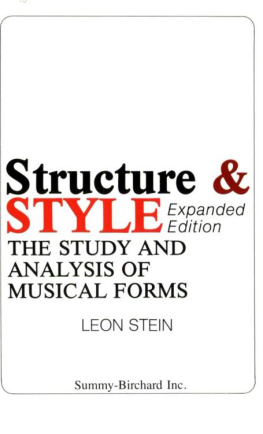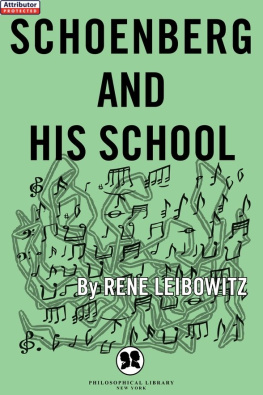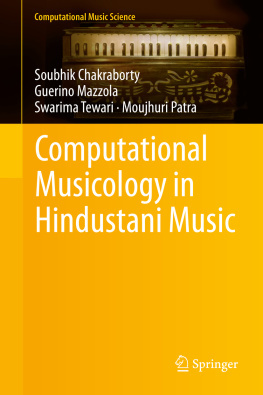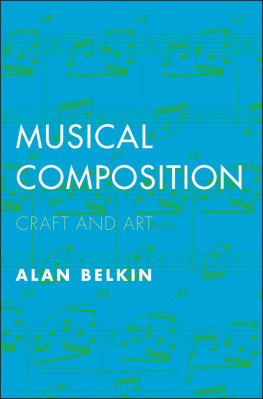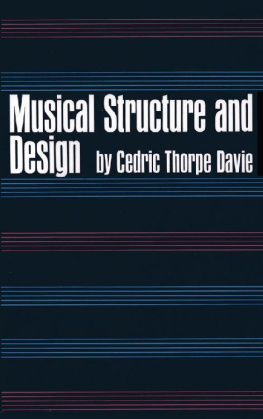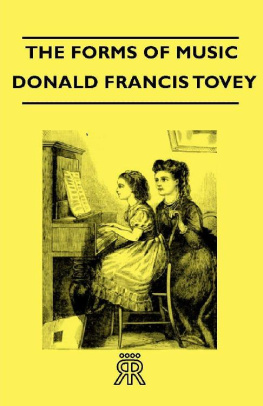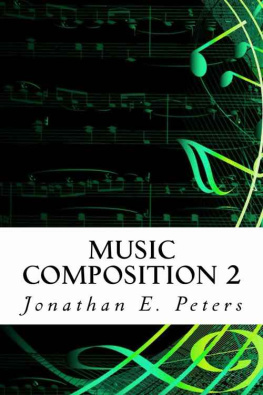Structure &
STYLE
Expanded
Edition
Structure &
STYLE
Expanded
Edition
THE STUDY AND
ANALYSIS OF
MUSICAL FORMS
LEON STEIN
Dean Emeritus
De Paul University School of Music


TO
ANNE, ROBERT AND KENNETH
Contents
ix
xi
Section 1 Units of structure
Section 2 Song forms
Section 3 Single-movement forms
Section 4 Contrapuntal forms
Section 5 Multi-movement and multi-sectional forms
Section 6 Vocal types
Section 7 Past forms and recent trends
Acknowledgments
Te author and publisher gratefully acknowledge the permission of various publishers, credited below the music examples, to reproduce portions of their copyrights.
The author also wishes to thank the following for their cooperation and assistance:
The administration of De Paul University for its generous provision of stenographic and secretarial assistance.
Dr. Wayne Barlow, Fr. Fidelis Smith, and Dr. Edwin Warren for their reading and critical review of the manuscript.
Dr. Karl Jirak and Mr. Herman Pedtke for proofreading the music examples in the text.
Dr. Anthony Donato for proofreading the text.
Finally, I would be remiss, indeed, if I did not acknowledge the stimulation of those students-teachers of teachers-who share enthusiasms, pose problems, and ask questions. These, demanding solutions and evoking answers, helped clarify the content of a subject which-of all the branches of music study-makes music not only most comprehensible, but most meaningful.
Leon Stein
All things are bound together by order, and this is form, which brings the universe into the likeness of God. DANTE
The structure or form of a composition is its pattern or plan. The function of form is to make music intelligible and communicative by the orderly arrangement of its materials-melody, harmony, counterpoint, rhythm, meter, tempo, dynamics, and color.
Style refers to the distinctive characteristics of a work, a composer, or a period.
Introduction

he need for a new text in analytical technique is in part the result of the development of music in the twentieth century. This development has taken two directions: on the one hand it involves present-day organization in composition; on the other, it involves a probing into and a growing awareness of the music of an often-neglected past. In regard to contemporary music, not only are we concerned with new patterns or modifications of established forms, but we find it necessary to reinterpret and redefine concepts and terms which were previously taken for granted, and, in some cases, were even assumed to have achieved a certain finality. Furthermore, the need to relate form to style is emphasized by the treatment of forms in earlier texts as abstract patterns dissociated from historic and stylistic determinants. The frequent disregard of music composed before the eighteenth century is partly the result of an attitude which at one time considered composers of these earlier centuries as "forerunners" and assumed that their music was necessarily "preparatory." The extensive research into early Baroque and pre-Baroque music, combined with the revived interest in the publication and performance of music of these periods, has emphasized the need for a clearer understanding of that music and has led to an actual transvaluation of values. The fact that (after a lapse of centuries) devices and, in some cases, patterns in active use in Baroque, Renaissance, and even Gothic music are emergent once again in twentieth-century music makes the study of these early forms particularly pertinent today.
Every crystallized form has a two-fold aspect. There are stylistic features which characterize that form during a particular period, and there are certain basic characteristics which do not change from period to period. For example, the fugue is found in the works of Bach, Beethoven, Richard Strauss, and Hindemith. The nature of the subject and the intervals of subject-answer relationship may differ in the fugues of each of these composers-these are the stylistic char acteristics-but the essential fugue procedure is retained in each case.
In order to distinguish between the stylistic and the essential norm, some knowledge of the history of a form is necessary. Historical information is obviously necessary also, in order to know the "how" and "when" in relation to the emergence of specific forms. However, in a textbook on form, the historical treatment must necessarily be concise and considered as background to the forms themselves.
The forms with which this book is concerned are those found in Western music. The idiom, form, and aesthetics of Oriental music make it so markedly different from Western music that only a separate study could do it justice.
Concerning the table of Forms and compositional procedures which follows, several possible arrangements of the various patterns suggested themselves: secular-sacred, single-compound, monophonichomophonic-polyphonic, vocal-instrumental, etc. But the fact that there are too many overlappings and ambiguities involved in such classifications-a cantata may be secular or sacred, a toccata a single or compound form, a hymn monophonic, homophonic, or polyphonic, and a motet, though a vocal form, could and often did involve instruments-led to the conclusion that the least confusing and controversial arrangement of the forms (at least from the student's viewpoint) would be alphabetical listings within the respective eras.
The majority of works to be analyzed are those which use the tonal-triadic idiom, composed generally between 1600 and 1900. The reasons for this are: (a) most of the larger instrumental forms were crystallized during this period; (b) the idiom is that most familiar to students who have completed the theory courses usually prerequisite to the study of form; and (c) it is these works which are most frequently performed. However, to disregard works composed before 1600 or after 1900 is not only pedagogically unsound but, even from the standpoint of current repertoire, unrealistic. Therefore, one chapter is devoted to forms before 1600, and another to twentieth-century techniques. However, rather than consider twentiethcentury music in an altogether separate category, twentieth-century procedures and structures are related to known patterns wherever it has been possible to do so. In some instances, this has involved broadening and even revising traditional concepts. Such a revision becomes necessary, for example, if we wish to maintain the concept of cadence as a kind of structural punctuation even when dissonant or non-triadic groupings occur in the final chord of a phrase or section. On the other hand, a unique technique, such as the tone-row system, must be considered by itself.

